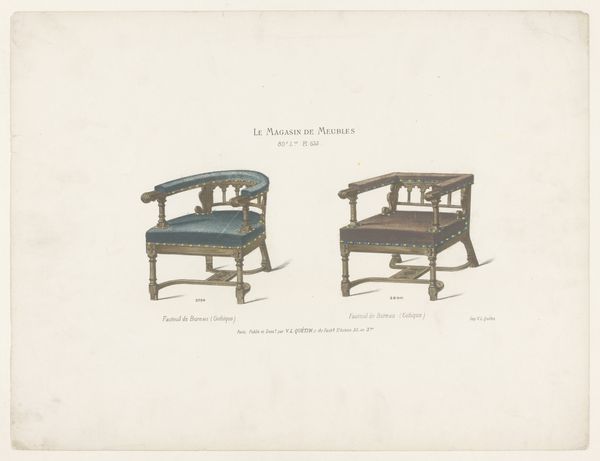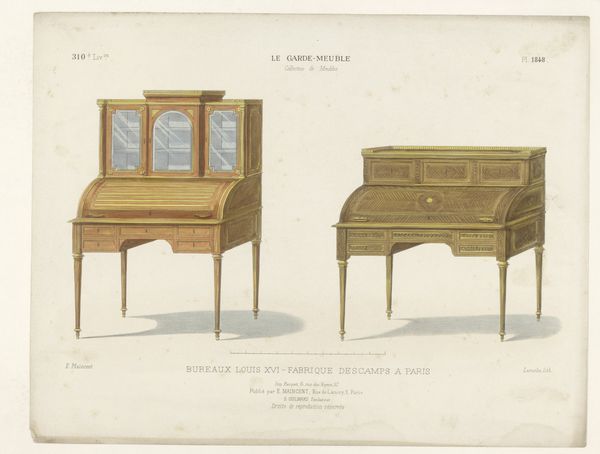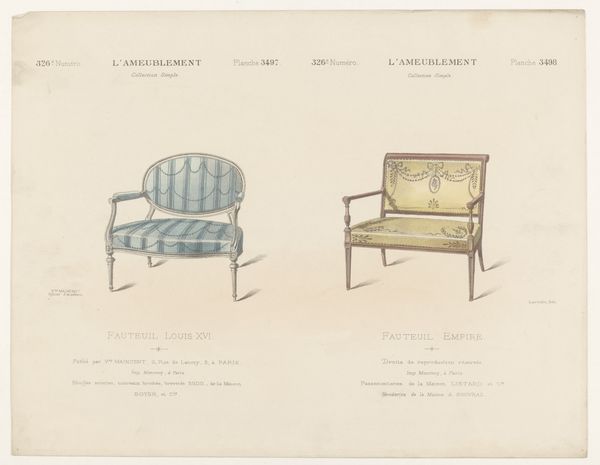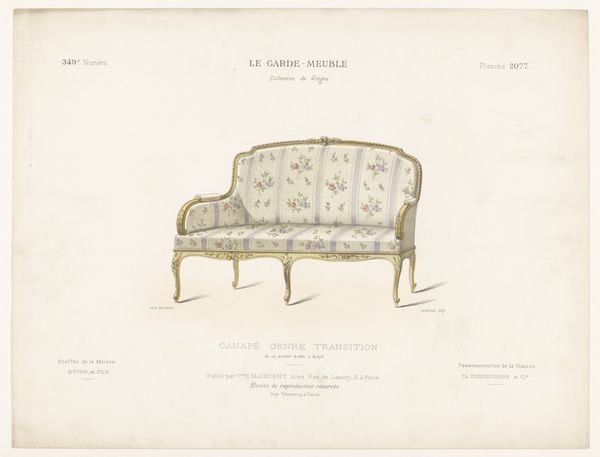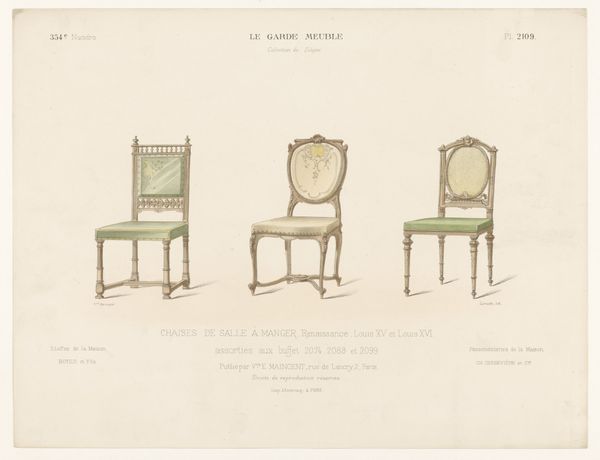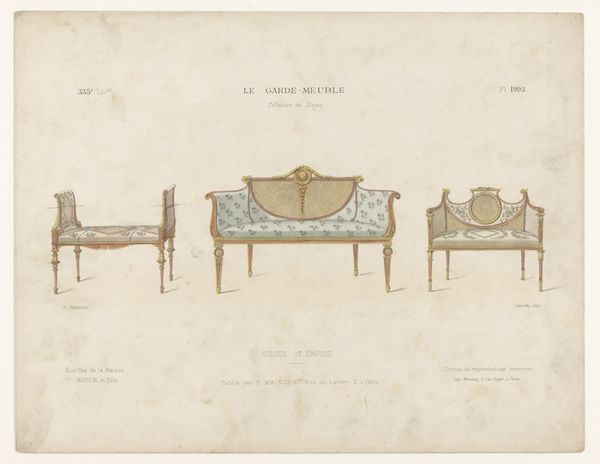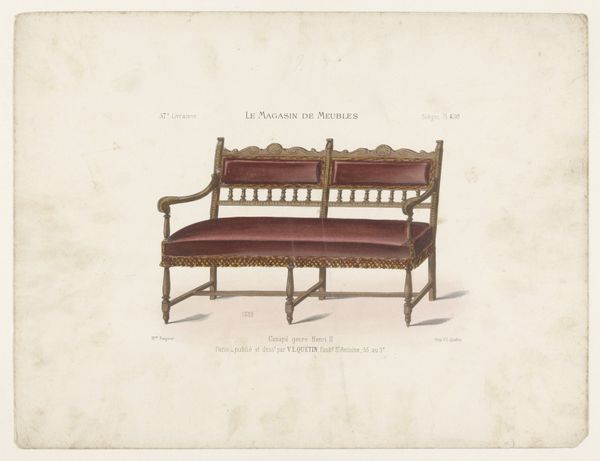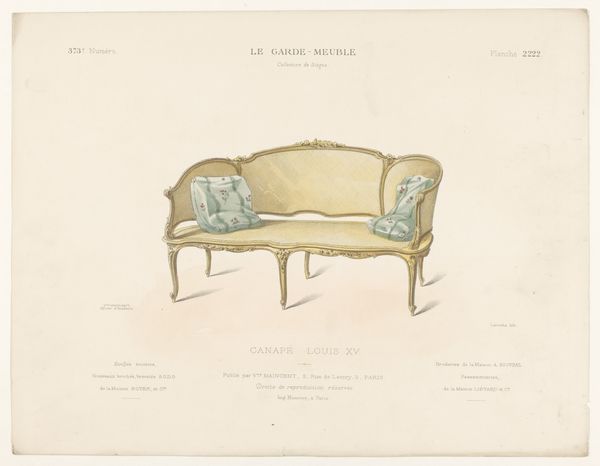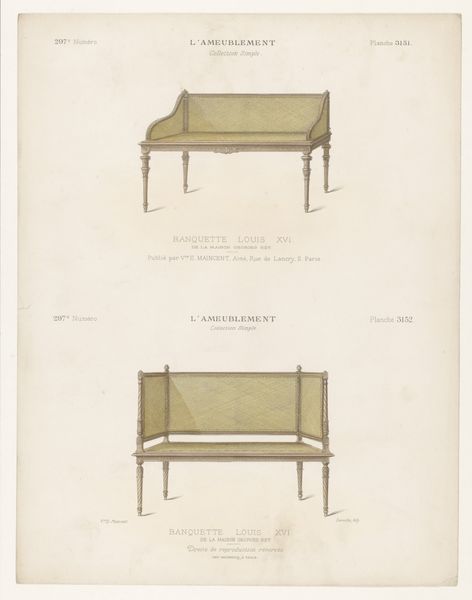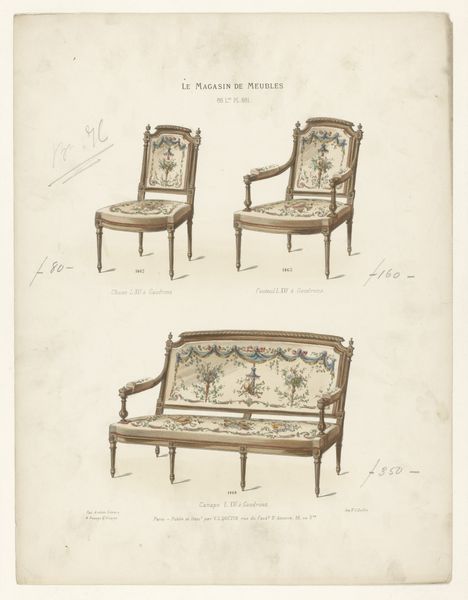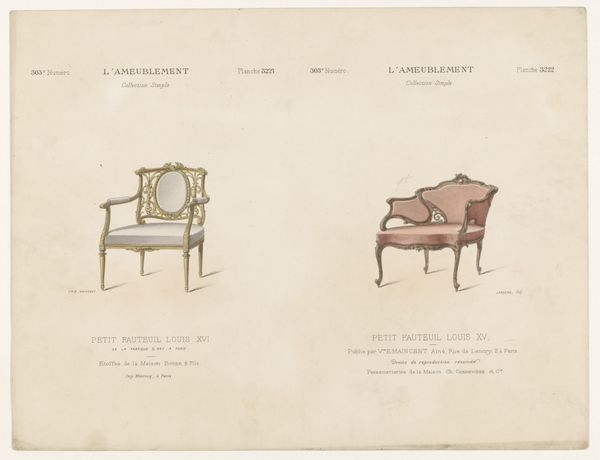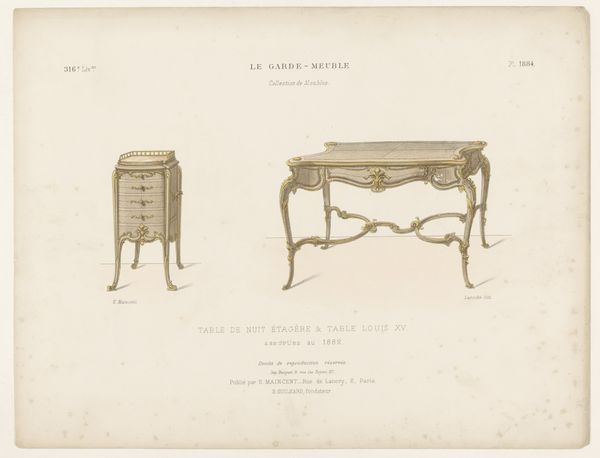
drawing, watercolor
#
drawing
#
watercolor
#
watercolour illustration
#
academic-art
#
watercolor
Dimensions: height 269 mm, width 356 mm
Copyright: Rijks Museum: Open Domain
Editor: Here we have “Twee fauteuils,” or “Two Armchairs,” a watercolor drawing from after 1878 by an anonymous artist. There’s a real feeling of delicate precision about them; almost architectural blueprints, but softer. What do you make of these armchair portraits? Curator: The paired presentation suggests more than just utility. The chairs are like portraits of status and refined living, reflecting an era where furniture held significant cultural weight. It's interesting that each is distinctly patterned; does one seem more masculine or feminine to you? Editor: I hadn’t considered it that way. Perhaps the armchair with gold patterned textile has a feminine aspect compared to the grey striped patterned chair that has a more masculine vibe? What do you mean when you say that furniture can hold cultural weight? Curator: Consider what these chairs might have witnessed. Social gatherings, political discussions... They're vessels that absorb and project the values of their time. Look at the slender, almost precarious legs; the high, upright backs. What do those details communicate about the sitter? Editor: I suppose they might reflect an era where composure, status and presentation mattered significantly. It does appear to enforce posture and reflect an emphasis on refinement. So you are thinking less about function, more about social identity and memory, here? Curator: Precisely. Think of how these visual signifiers contribute to our collective understanding of 18th-century aristocracy. Even the colours play a role – the gold tones evoking wealth and tradition. Do the armchairs, in your opinion, carry the status, or is the patron/consumer holding the status represented by these chairs? Editor: I think that both carry status in different aspects of the environment, but they act to compliment each other through the act of observation, to allow each to grow within the shared space and memory, to have a certain power through collective status. I appreciate the focus on chairs as active symbols. Curator: Indeed. It's fascinating to consider furniture not just as functional objects, but as powerful storytellers and social markers that connect the personal and collective.
Comments
No comments
Be the first to comment and join the conversation on the ultimate creative platform.
